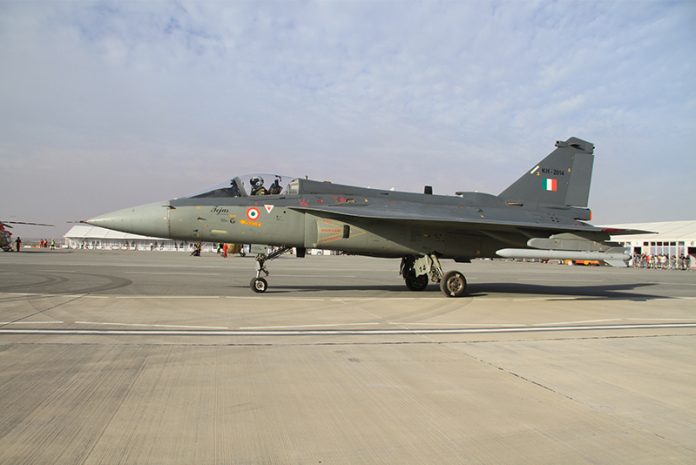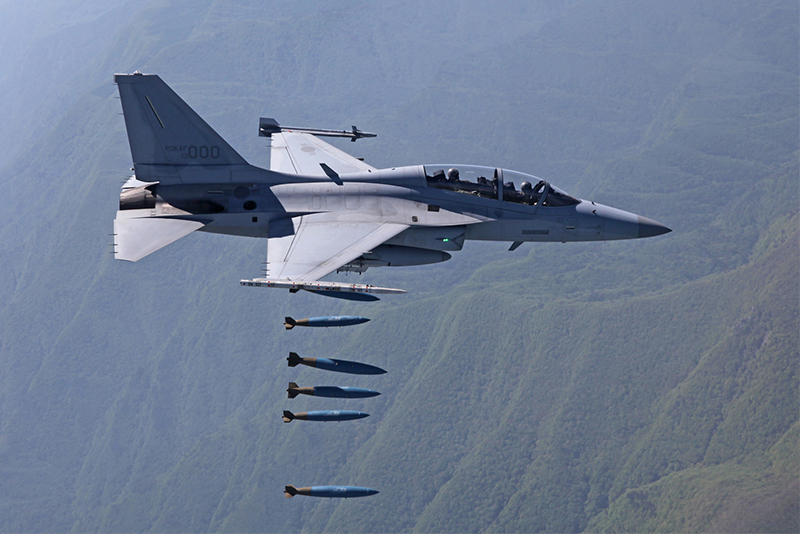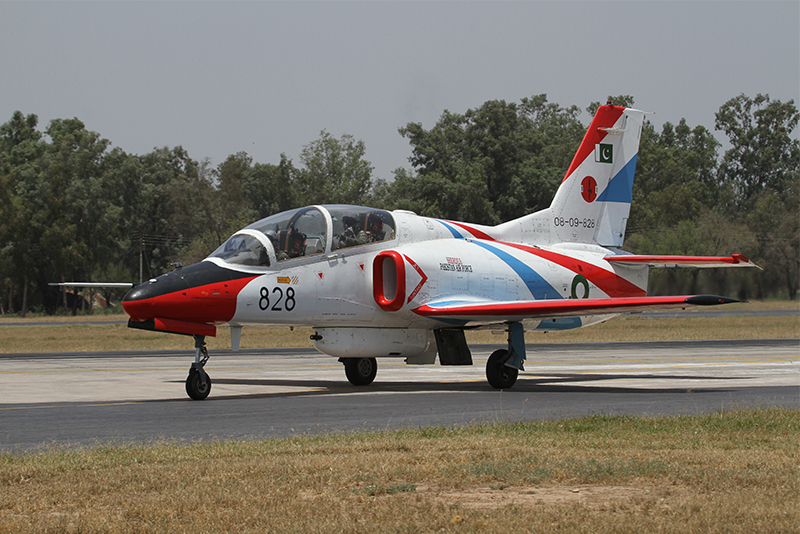
There is now a growing range of ground attack aircraft available now, the purchase of which will not break a nation’s defence budget.
COIN air operations
Counter insurgency (COIN) air operations in Asia have shaped and been shaped by many campaigns.
The French in Indochina from 1946-1954 and Malayan Emergency from 1948-1960 were among the earliest to witness COIN operations in the region. The United States was heavily involved in the Vietnam War for 20 years until 1975, where unguided bombs, rocket propelled explosives and even napalm were dropped in huge amount on the North Vietnamese Army (NVA) and Viet Cong.
Indonesia’s government took on the East Timor freedom fighters from the mid-70s until the late 90s, while the Philippines still wages a war with Islamic militias in the south of the country. Malaysia too has carried out its own anti-terrorist operations in Sabah in 2013. Thailand has also experience terrorism activities in its southern region.
Cutting attack costs
Air power always plays a significant role in trying to defeat insurgents and freedom fighters, known simply as terrorists by their enemy. This has been particularly prevalent in conflicts within Iraq, Afghanistan and latterly Syria against Daesh. The media plays a major role in the dissemination of information with rapid reporting via satellite links, which is why precision guided munitions, targeting pods and EO/IR sensors have been relied upon to avoid collateral damage and the killing of innocent people.
All this can come at a hefty price and politicians as well as military commanders understand there are much cheaper options to using an Lockheed Martin F-16 or Fairchild Republic A-10. Dropping million-dollar precision guided munitions (PGMs) by jets that costs tens of thousands of dollars an hour to operate, just to get a terrorist escaping on a motorbike or a cadre of militia is economically unacceptable these days.
USAF Programme
Today, cheaper $30-$40 million aircraft with much lower operational costs yet still armed with high technology such as laser guided rockets is what many in the military are aspiring to operate.
The United States Air Force (USAF) has been searching for a new light, counter-insurgency, ground attack and reconnaissance aircraft since 2009 to fulfil its light attack/armed reconnaissance (LAAR) programme. This has evolved into the OA-X (Light Attack – Experiment) although there has still been no decision, mainly due to political objections.
Why is this so important to Asia? Because if the USAF was to select an aircraft, it could open the way for more orders for the winning manufacturer, particularly in Asia.
The competition sees the Sierra Nevada Corporation/Embraer A-29 Super Tucano face off with the Textron AT-6B Coyote, and the USAF is looking to acquire 24 of them by 2022 for around $1 billion.
The $40 million per aircraft price tag might water the eyes of some Asian air force commanders, but undoubtedly the operational cost would be lower than most fighters as would the new generation weapons.
The Textron Scorpion jet was also evaluated, while Aero Vodochody wanted to participate with its much upgraded L-159 Advanced Light Combat Aircraft (ALCA), the F/A-259 Striker.
However, the US authorities were not interested, preferring a turboprop instead. The Striker has now been abandoned and the future of the Scorpion is also questionable.
According to budget documents, the “the light attack aircraft will provide a deployable and sustainable multirole attack capability, capable of performing a diverse array of attack missions, including but not limited to close air support, armed reconnaissance, strike coordination and reconnaissance, airborne forward air control, and interdiction.”
Many Asian air forces will be looking on at the programme, even if it might be outside their budgets at the moment. The A-29 Super Tucano has been sold to the Indonesian Air Force (16) and Afghanistan (6) and more recently to the Phillippines Air Force (8) but the AT6B Coyote, an attack version of the successful T-6 trainer has never won a defence contract.
While the BAE Hawk has been an effective light attack aircraft in the past for Malaysia (2013 Sabah uprising) and Indonesia (East Timor in 90s), it is now viewed in the region as a more expensive older generation jet. With cheaper more cost effective options available, the BAE’s Hawk’s role in COIN is subjective.
Local aircraft for local air forces
KAI FA-50
Korea Aerospace Industries (KAI) has found a local solution for the Asian air forces, the fighter attack (FA) or light attack version of the T-50 which is capable of speeds of Mach 1.5 and can carry 4.5 tonnes of armaments. The air forces of South Korea, Philippines and Thailand all operate such aircraft.
Not too surprisingly the biggest operator of the FA-50 is the Republic of Korea Air Force (RoKAF), which operates 60 split across two squadrons – 103 Fighter Squadron of the 8 Fighter Wing at Wonju and 202 Squadron of 16 Fighter Wing at Yecheon Air Base.
They have been delivered in two batches: the first 20 in a contract worth $600 million were delivered during 2013/14 and a second for 40 worth $1 billion followed between 2013 and 2019. At around $30 million per aircraft, it amounts to considerably less investment than a new F-16C/D.

Specifications FA-50
The FA-50 can be armed with Raytheon AIM-9 Sidewinders for self-protection as well as air-to-ground weapons like the AGM-65 Maverick, GBU-38/B Joint Direct Attack Munitions (JDAM), CBU-105 Sensor Fused Weapon (SFW), Mk-82 Low Drag General Purpose (LDGP) bombs and Cluster Bomb Units (CBUs). Mounted internally is a three-barrel 20mm Gatling gun and LAU-3/A 19-tube 2.75 inch rocket launcher, used to fire Folding-Fin Aerial Rockets (FFAR).
The Philippines Air Force
The Philippines Air Force signed a $417.95 million contract with KAI for 12 FA-50PH Golden Eagles on March 28, 2014. The first example flew on 19 June, 2015 and were delivered between December 2015 and May 2017. They are operated by the 7th Tactical Fighter Squadron based at Basa Air Base, Pampanga.
Royal Thai Air Force
In Thailand, the counter-insurgency role used to be the domain of the Aero Vodochody/Elbit L-39ZA(ART) and Dornier (now Airbus) Alphajet, but these are likely to be replaced by the KAI T-50TH Golden Eagle in the forseeable future. While the T-50THs are to be used as a lead-in fighter trainer for its fleet of F-16s and Saab Gripens, subsequent upgrades are likely to see them flown in the air to ground role.
KAI was awarded a $52.5 million ‘upgrade and modification’ contract on 24 May, 2019 by the Royal Thai Air Force (RTAF) to equip the eventual fleet of 12 T-50THs (only four have been delivered to date) with a radar warning receiver (RWR), countermeasures dispenser systems and a radar system.
The latter is likely to be the Elta EL/M2032 multimode airborne fire control radar orientated for air-to-air, air-to-sea and strike missions. The work should be completed by October 2021.
The fighter attack version of the T-50, is the FA-50 and the objective of the RTAF is clearly to make it multirole – more than just a lead in fighter trainer.
The first flight of a RTAF T-50TH took place on 10 August, 2017 which led to the first two aircraft being delivered in January 2018, with a second pair following in January 2019, while the rest will arrive by 2020. They are located with 401 Squadron based at Takhli.
Indonesian Air Force
Indonesia has also acquired 16 T-50I Golden Eagles for flying training purposes but they are believed to have a weapons capability too. They were delivered between September 2013 and 25 January, 2014 to Iswahyudi where they are flown by Skadron Udara 15 of the Indonesian Air Force (TNI-AU). KAI is also marketing the T-50/FA-50 to Malaysia.
Super Tucano
While South Korea operates the bigger Boeing F-15K Slam Eagle and F-16s, and Thailand has the F-16 and Gripens to fulfil missions that call for a heavier load, the same cannot be said of the Philippines.
So the Philippine Air Force (PAF) has also ordered a second lighter attack aircraft, the Embraer A-29 Super Tucano which has proved itself in this role across South America, the Middle East and Africa.

Specifications Super Tucano
Boasting a maximum load of 3,306lb (1,500kg), means the five hard points can carry general-purpose bombs and guided air-to-ground weapons as well as air-to-air missiles. The two-seat AT-29 is fitted with a FLIR Systems AN/AAQ-22 Star Safire forward-looking electro optical/Infra-red turret under the fuselage for targeting, navigation and target tracking for night attack and surveillance missions. Two wing-mounted 12.7mm machine guns that can fire 1,100 rounds a minute (rpm) come as standard fit.
Philippine Air Force
Embraer announced a sale for six A-29B Super Tucanos to the Philippines on 30 November, 2017, worth around $100 million (PHP 4.968 billion) stating that they will be used for “close air support, light attack, surveillance, air-to-air interception and counter-insurgency.” They will be delivered by February 2020 and operated by the 15th Strike Wing which should be moving to Lumbia Airport, Cagayan de Oro between 2019 and 2020.
These new Brazilian turboprops will augment the remaining North American Rockwell OV-10C/M Bronco attack aircraft used by the PAF in strike missions. The USAF issued a request for proposals in July 2018 to dismantle, ship and re-assemble two former NASA OV-10G+s to the PAF, but it is unclear if they ever got there. The Bronco was a popular COIN aircraft in Asia, not just with the US military in Vietnam but with the RTAF which operated them from 1972 to 2004 as well as the PAF.
Indonesian Air Force
The TNI-AU operates 15 Super Tucanos, covering two batches of eight delivered between 2012 and 2016. One aircraft was lost in February 2016 with both crew members being killed.
The Afghan Air Force
The Afghan Air Force operates 25 A-29 Super Tucanos, which were built at Embraer’s Jacksonville facility in Florida. The Afghan pilots were trained by Sierra Nevada Corporation at Moody AFB, Georgia and the aircraft were delivered to Afghanistan between 2016-2019 as part of a foreign military sale (FMS).
APKWS laser guided rocket
One of the most popular new weapons in the light attack role is the BAE Systems 70mm Advanced Precision Kill Weapon System (APKWS) laser guided rocket which has been integrated on the Super Tucano and OV-10 Bronco.
According to BAE, the APKWS can lock onto both moving and stationary targets from more than two miles (3km) away.
At Egypt’s EDEX exhibition last December, a BAE Systems representative told AMR, “the APKWS is the most cost effective laser-guided munition in its class and a quarter the price of a Brimstone missile.”
He was keen to stress that its laser guided rocket could only be acquired through FMS, and claims the system had a ‘100 percent success rate in Iraq’ while being operated from Iraqi Air Force Bell IA-407 helicopters.
Emerging new option
Leonardo’s M346FA
A new emerging threat to the dominance of the FA-50 and Super Tucano in the region is Leonardo’s M346FA. The Italian company, which launched the fighter attack version of the M346 trainer at Paris Air Show in June 2017, is positioning the aircraft as a replacement for 20/30 ton class fighter-bombers in roles like combat air patrol (CAP), quick reaction alert (QRA), close air support (CAS) and COIN.
Emanuele Merlo, senior vice president Trainers Aircraft at Leonardo told the author in late October: “The operational costs of the F-35, Rafale etc are so high that the M346FA with a varied assortment of weapons and its reliable multi-mode radar, would not only be less expensive to operate but save the fatigue life of the established fourth generation fighters.”
Leonardo announced in July that it had won its first M346FA contract, for six aircraft, from an undisclosed customer.
Looking Around the Region
Not all light attack options are restricted to the US and South Korea of course. Both Pakistan and Bangladesh operates the Hongdu K-8 Karakoram, and while the primary role is jet training the Chinese jet can be fitted with a cannon pod under the fuselage.

Bangladesh has also acquired 14 Yakovlev-130 Mitten jet trainers which have a secondary light attack role.
India has been developing the Tejas light combat aircraft (LCA) for 30 years now, with around 15Mk1s of an order for 40 flying with 45 Squadon at HAL Bangalore before it relocates to Sulur Air Base in the near future. The jet reached Final Operational Clearance on 20 February, 2019.
Deliveries of the 40Mk1s, including seven dual-seaters continue, while the IAF also requires an additional 73 single-seaters and ten dual seaters in Mk1A configuration. They will feature an enhanced indigenous electronic warfare system and AESA radar.
Taiwan’s Republic of China Air Force (RoCAF) continues to fly the AIDC AT-3 Tzu-Chung not just for flying training but also a secondary light strike role – there are around 45 continuing to serve the RoCAF with most of them serving the Fighter Training Group at Kangshan Air Base.
by Alan Warnes












